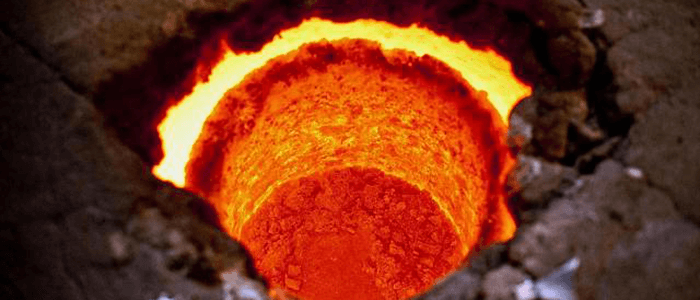In the casting production process, shrinkage defects have always been an important problem that plagues process quality. This internal hole defect caused by metal solidification shrinkage not only affects the mechanical properties of the casting, but is also likely to become a stress concentration source during use, leading to early failure of the component. Starting from the basic principles of metallurgy, this paper deeply explores the essential reasons for the formation of shrinkage cavities, and combines years of engineering practice experience to systematically analyze the multiple factors affecting the formation of shrinkage cavities, and proposes a control method with practical guidance.
Introduction
As one of the oldest metal forming processes, casting is based on the precise control of the solidification process of liquid metal. During this phase change process, the metal undergoes a transition from disordered liquid to ordered solid, accompanied by significant volume changes. When this volume shrinkage is not compensated in a timely and effective manner, various types of shrinkage defects will be formed inside the casting. Among them, shrinkage cavities, as the most representative shrinkage defect, have always been the key topics of casting process research in terms of their formation mechanism and control methods.
Modern industry has increasingly stringent requirements for casting quality, especially in high-end manufacturing fields such as aerospace and energy equipment, where the control of the internal quality of castings has reached an almost demanding level. This requires casting engineers to not only master traditional process experience, but also to deeply understand the essential laws of shrinkage formation from the theoretical height of metal solidification. This article will systematically explain the solution to the shrinkage problem from theory to practice.

Formation mechanism of shrinkage
The solidification process of metal is essentially a complex process in which thermodynamics and kinetics work together. When the temperature of molten metal drops below the liquidus, the change in the free energy of the system drives the atoms to change from disordered arrangement to ordered arrangement. This phase change process is accompanied by significant volume shrinkage, and the fundamental reason is that the atomic packing density of solid metal is significantly higher than that of liquid.
From a microscopic perspective, the volume shrinkage of metal during solidification mainly comes from three aspects:
- Liquid shrinkage: The volume shrinkage of molten metal when it drops from the pouring temperature to the liquidus temperature is usually caused by the reduction of superheat.
- Solidification shrinkage: The shrinkage that occurs when a metal cools from the liquidus to the solidus, the extent of which depends on the crystallization characteristics of the alloy (e.g., gray cast iron has a lower shrinkage rate due to graphite precipitation expansion, while cast steel has a higher shrinkage rate).
- Solid-state shrinkage: The shrinkage of a fully solidified metal when it is cooled to room temperature mainly affects the dimensional accuracy of the casting and is usually less related to shrinkage.
Among them, solidification shrinkage is the main factor in the formation of shrinkage. If the molten metal cannot be effectively compensated during the solidification process, a cavity, i.e., shrinkage, will form in the last solidified part.
It is particularly noteworthy that there are significant differences in the shrinkage characteristics of different metal materials. Taking cast iron as an example, due to the graphitization expansion during its solidification process, this expansion effect can partially offset the shrinkage of the metal matrix, so the shrinkage tendency of gray cast iron is significantly lower than that of cast steel.
Analysis of key factors affecting shrinkage formation
In actual casting production, the formation of shrinkage is never the result of a single factor, but a manifestation of the combined influence of multiple process parameters and material properties. Understanding the interaction between these factors is the prerequisite for effectively controlling shrinkage defects.
The influence of alloy composition is the most basic, and the shrinkage tendency of different alloys varies significantly:
- Cast steel: large solidification shrinkage rate (about 4%~6%), high shrinkage tendency, and strong shrinkage compensation measures are required;
- Gray cast iron: due to graphitization expansion (about 1%~3%), the shrinkage rate is low, and the shrinkage problem is relatively rare.
However, the influence of casting structure design on shrinkage formation cannot be ignored. In actual production, it can often be observed that shrinkage is most likely to occur at the sudden change of wall thickness, the inner fillet, and the thick and large section. This is because these parts solidify slowly and become the last solidification zone. If the shrinkage compensation channel solidifies and closes prematurely, shrinkage will form in these parts.
Reasonable casting design should try to avoid drastic changes in cross section. If necessary, process subsidies can be set to improve the solidification sequence.
Influence of process parameters
The control of process parameters is also crucial.
- Pouring temperature: Too high will increase liquid shrinkage, too low may solidify prematurely and block the shrinkage feeding channel;
- Cooling speed: Too fast cooling may cause local shrinkage, too slow cooling will prolong the solidification time and increase the risk of shrinkage holes;
- Gating system design: The location of the inner gate affects the flow path of the molten metal, and it is necessary to ensure that the shrinkage feeding channel is unobstructed.
Shrinkage feeding system design
Based on the in-depth understanding of the shrinkage formation mechanism, a variety of effective control methods have been developed in actual engineering. Among them, the design of the shrinkage feeding system is the most core process measure. As the most traditional shrinkage feeding method, the riser sleeve has a seemingly simple design principle, but it actually contains rich process wisdom.
A well-designed riser sleeve should not only consider the geometric size, but also pay attention to key parameters such as its modulus ratio with the casting and the shrinkage feeding distance.
- Riser optimization: The size of the riser must ensure that it solidifies later than the casting and has sufficient metal for shrinkage compensation;
- Application of chill: Placing chill in the thick part can accelerate cooling and guide sequential solidification;
- Insulation and heating measures: Insulation riser or heating cover can prolong the liquid time of the riser and improve the shrinkage compensation efficiency.
Prevention and control measures for shrinkage defects
- Optimize the structure of the casting: avoid sudden changes in cross-section, adopt uniform wall thickness design, and reduce isolated hot nodes.
- Reasonable riser setting: Calculate the riser size according to the casting modulus to ensure that the shrinkage compensation distance meets the process requirements.
- Control process parameters: Adjust the pouring temperature and cooling rate to avoid premature solidification or excessive shrinkage.
- Adopt auxiliary measures: such as chill, insulation riser sleeve, filter, etc., to improve the flow and solidification behavior of molten metal.
Conclusion
The essence of the shrinkage problem is the contradictory unity of metal solidification characteristics and process control. Through in-depth understanding and precise control of the solidification process, shrinkage defects can be completely controlled within the allowable range. It is worth emphasizing that in actual production, no one method is universally applicable. Excellent casting engineers need to flexibly use various process methods according to specific product requirements, material characteristics and production conditions to obtain ideal casting quality. This perfect combination of theory and practice is the charm of casting technology.


